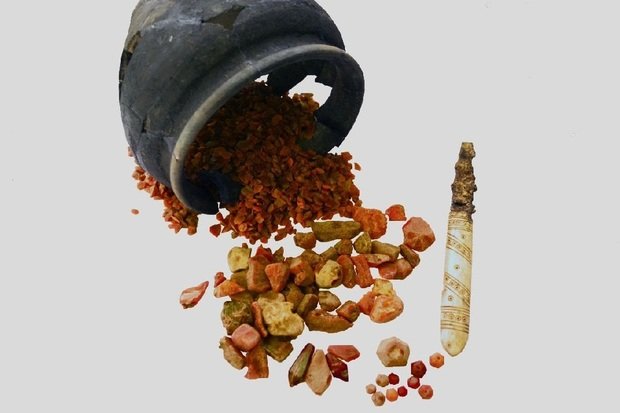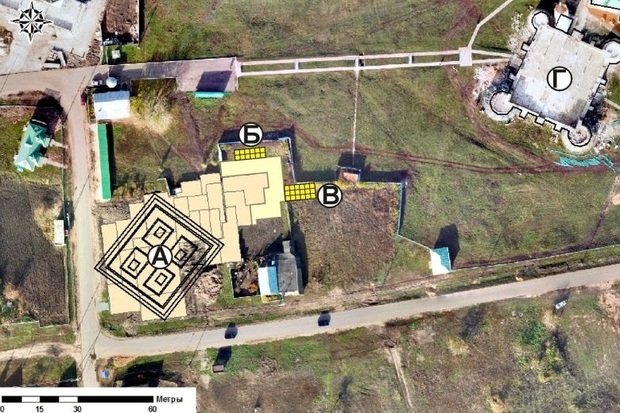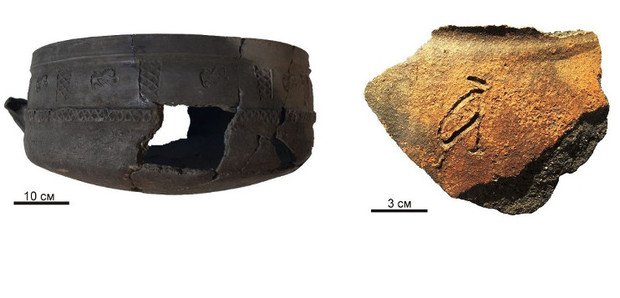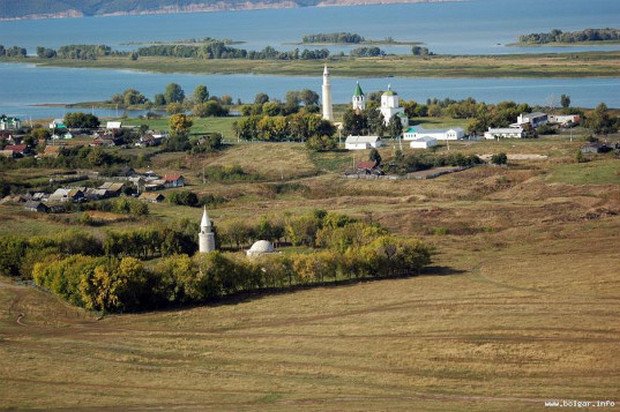''Raw materials came from the Baltic states'': the secret of amber workshop in Bolgar
Fine works, Armenian and Slavic traces and export of various raw materials – the interview with the archaeologist who made the unique discovery in Tatarstan
Recently it has become known about an interesting discovery in Bolghar, Tatarstan. Researchers from the Institute of Archaeology of the Russian Academy of Sciences found a jewelry workshop for amber processing, which operated here in the late XIII-early XIV century. The head of the group of archaeologists, Denis Badeev, in the interview with Realnoe Vremya told from where the raw materials were delivered to Bolgar and representatives of what peoples lived in the city in the Golden Horde time. In addition, the scholar told about other interesting findings on the territory of the settlement and shared his opinion on the stay in the city of the companions of the Prophet Muhammad.
Originally from the Baltic states
Mr. Badeev, could you tell us how you discovered the workshop?
This happened as a result of systematic annual archaeological research of Bulghar settlement. We were just exploring the layers of the Golden Horde period. The value of the finding is that such things are not come across so often.
So, what exactly did you find in the amber workshop?
We found the raw materials (raw amber), a large number of workpieces and products (beads, pendants, inserts), waste production. Tools were also found — they are represented by different types of craft knives with a curved back, a small chisel for cutting and embossing amber, a file, awls for piercing holes with the subsequent creation of beads. These tools are nothing special, probably many artisans of that time had them. But all together — a sign that it was a workshop, not some stock for product sales.

''We found the raw materials (raw amber), a large number of workpieces and products (beads, pendants, inserts), waste production. Tools were also found — they are represented by different types of craft knives with a curved back, a small chisel for cutting and embossing amber, a file, awls for piercing holes with the subsequent creation of beads.'' Photo: archaeolog.ru
How delicate are this works?
It wasn't industrial production. There are fine products, unique and rare. There are some things that are come across sporadically. But, basically, these products are intended for ''a wide range of customers''. Having mastered the work, masters surely could make the same beads in a large number. But there are things that clearly belong to the hand of a disciple: somewhere the form is not observed, the quality suffers. It can be seen that not only specialists worked there, but also apprentices.
From where could the raw material for amber jewellery be supplied?
We have made a series of sample analyses at the Kazan Federal University. The small amount of sulphur in them suggests that, most likely, the raw materials came from the territory of the Baltic states. That is, it is Baltic amber.
Where will these things go — to Moscow, Kazan or remain in Bolgar?
The latter. There, on the spot, as you know, there is the Museum of Bolgarian civilization. We hand all findings over to them for further processing and study by specialists.

''I hope that the visitors of Bolgar will have the opportunity to see them with their own eyes. It all depends on the museum staff — how soon they will process them and arrange an exhibition.'' Photo: archaeolog.ru
Bolgarian bazaar
How long have you been working in Bolgar?
Eight years.
What interesting discoveries, in addition to the amber workshop, have you made there?
There was a lot of interesting things, we can write a whole monograph. For example, the main object of the study of our group was the building of the city bazaar of the XIV century. This is the unique and first archaeological studied building. For me, this finding is the most interesting. In addition, there were treasures — coin, clothing. Not always treasure is such an interesting find. For me, it is better to study those objects that have not been explored before. Unfortunately, from the architectural construction of the city market there is little left, because in this area an active economic activity was conducted. But we managed to identify its layout, the goods sold there.
What was it?
There were many things of local production. For example, we found a batch of iron stirrups — about 70 pairs. There were also imported items, as evidenced by commercial seals from Western Europe. In Bolgar, there were brought cloth, fabric was produced in the cities of Holland and Belgium. Curiously, from there they exported sheep wool, that is, raw materials, and brought back the finished product.

Armenian colony and the issue of companions of the Prophet
Mr. Badeev, representatives of what peoples, except the local population and the Slavs, could work in the city?
With the inclusion of various territories in the Golden Horde, a wide ethnic spectrum appears in the city. There were the inhabitants of the Caucasus: many specialists note the Caucasian features in the stone architecture of Bolgar. We find housing facilities related to this population. Again, there were representatives of nomadic and sedentary peoples of the Volga region, which became part of the Golden Horde. By the way, the Mari population was included in the state during the Volga Bulgaria.
Where did all these people go? Assimilated among the locals, gone somewhere?
It depends. For example, an Armenian colony is known on the territory of the Bulhgar settlement. By the middle of the XIV century, it was removed from the territory of the city, probably because of the religious contradictions. While Bolgar felt itself confident, they lived in the city. Then they could easily change their place of residence.

So it turns out that the Armenians enjoyed the protection of the local khan, if some period they lived peacefully?
Many rulers were interested in trade and crafts then. The same Mongols rarely destroyed the cities associated with trade. On the contrary, we sought to develop economic relations. What, in fact, the Golden Horde was famous for: one could safely move around its territory and trade.
When was Bolgar destroyed?
It was destroyed several times. The first is related to the capture of the city by the Mongols, but then it quickly recovered. Then Bolgar suffered greatly during the great turmoil in the Golden Horde, when it was seized by one of the Horde knyazs Bulat-Timur. Although this point is controversial: it happened either during the capture of Bolgar, or during the abandonment of the city, as evidenced by the remains of a fire, sanitary graves. Finally Bolgar was destroyed by commander of Russian Prince Fyodor Pyostry in 1431. The last date is conditional and quite controversial.

''The history of Bolgar shows that the Muslim population, Christians and representatives of other faiths could peacefully coexist here for a long time.'' Photo: bolgar.info
Now we are seeing the revival of Bolgar, which is welcome. It is believed (based on written sources) that this is where the Bulgars converted to Islam. And this is a holy place for the Muslims. The history of Bolgar shows that the Muslim population, Christians and representatives of other faiths could coexist peacefully here for a long time.